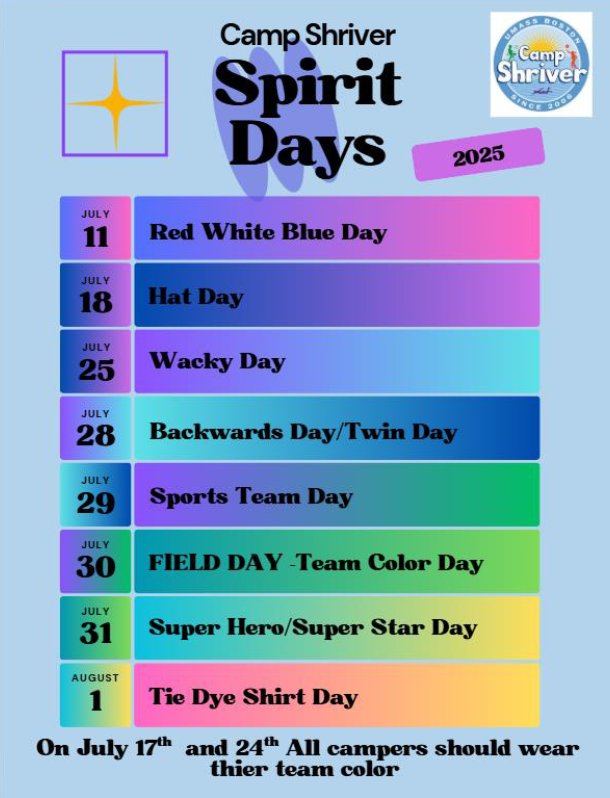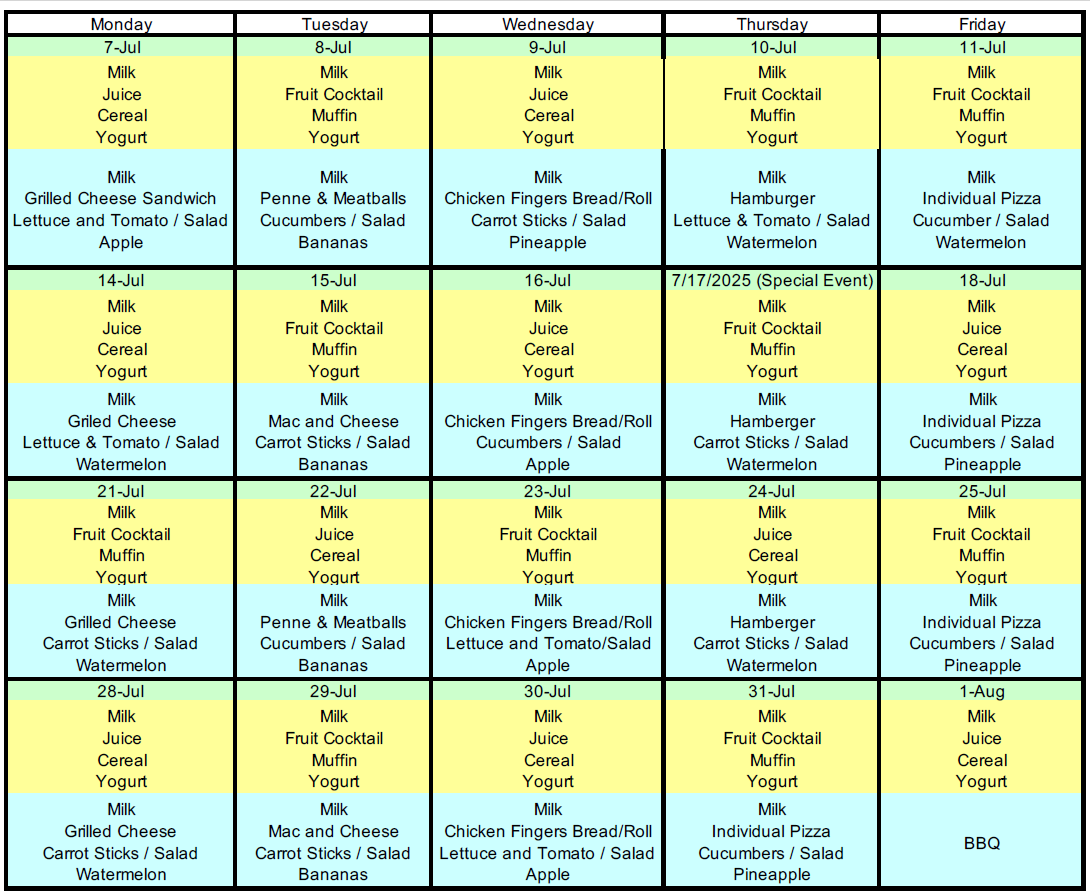- Home
- Center for Social Development & Education
- Camp Shriver Staff Information
Camp Shriver Staff Information - Camp Shriver 2025
CAMP SCHEDULE

Important Documents
Camp Shriver and Saturday Camp Policies and Procedures 2025- Final Draft
Orientation Presentations
2025 Behavior Management and De-escalation strategies
2025 Camp Survival Guide Presentation
Camp Shriver Expectations 2025
Camp Shriver Inclusion 101 slides_FINAL 2025
How to Take Attendance in CampBrain
BREAKFAST AND LUNCH MENU

HEALTH & SAFETY - Nurse Kailyn Presentation
When to use EpiPen: At the first sign of a severe allergic reaction!
Watch this video on How To Use an Epi-Pen
Symptoms of anaphylaxis include:
*Swelling of lips, tongue, uvula
*Shortness of breath, wheezing, stridor, difficulty breathing/choking
*Chest tightness
*Hives, rash, itchy skin
*Skin flushing (redness) or pale skin.
*Dizziness, syncope (fainting)
*Nausea, vomiting
*Stomach pain
*Confusion
*Incontinence
*Weak, rapid pulse
*Many people with severe allergies also report a “sense of doom” as their body begins reacting to an allergen, whether it’s a certain food, an insect bite, medication or another trigger. This feeling may start before symptoms become visible.
Epinephrine Auto Injector/EpiPen
*Used to reverse symptoms of anaphylaxis
*Anaphylaxis is a severe allergic reaction that can be life-threatening. Take signs of anaphylaxis seriously, error on the side of caution
*ALWAYS CALL 911* and then notify UHS and parents/guardians of child
*There are different versions of auto injectors so please follow directions on the device you are using.
*Please use caution to not inject yourself in the hand instead of the patient's leg!
*You do not have to remove pants before injecting
*Auto injectors should always be kept in pairs in case 1 doesn’t work or if the patient needs a second dose
*If symptoms worse or do not improve after the first dose, a second dose can be given 5-15 minutes after the first
ASTHMA:
- Asthma is a chronic inflammatory disease that affects the lungs
- Common symptoms include, wheezing, difficulty breathing or shortness of breath, tightness in the chest, decreased ability to exercise
- During an asthma attack, children have rescue inhalers that have specific administration instructions
- If you notice a child is having trouble breathing or they report trouble, please call RN and administer inhaler, have the child rest until they are assessed.
FIRST AID:
- Please always call or bring the child to RN if you are ever questioning an injury
- Protect yourself and the child by wearing gloves whenever dealing with bleeding wounds
- For minor scrapes and cuts, try to clean the area with soap and water and put a band-aid on the area.
- Any head injury, please bring child to RN (or call RN to activity) for assessment
FUNDRAISING! JOIN US!
Barbara Gildea, Fundraising & Partnerships, barbara.gildea@umb.edu, (617)287-7247